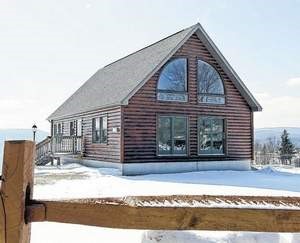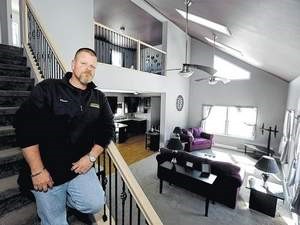
“I thought a modular wouldn’t sell for a lot of money if I ever decided to sell it. I just didn’t think modulars could sell for as much as a stick-built home,” Porter said. After consulting two different real estate agents with his concern, he became open-minded to the idea of building a modular home.
“The real estate agents told me a modular would sell for just the same, if not more, than a stick-built home, because it’s built in a controlled environment. The wood doesn’t see rain or other weather conditions when the home is being built,” Porter said. So, he decided to build a modular home and has no regrets.
“I was surprised at how nice everything turned out. You always hear good stuff about modular homes today, and that wasn’t always the case. The quality has gone up and is the same as a stick-built home,” Porter added.
From selecting floor plans and features to saving time and money, constructing a modular home promotes its share of advantages. Allegations have surfaced over the years to discredit the efficiency of modular construction alleging that modular buildings depreciate in value, are cheaply made, and are exposed to more wear and tear during transportation.
Sales manager Dennis Yun at Kintner Modular Homes, Inc. in Tunkhannock, Pennsylvania, says that people do not completely understand the process of building modular homes, which leads to misunderstandings.
Yun sa
Sales Manager Dennis Yun stands on the stairway of a contemporary two-story modular home at Kintner Modular Homes in Tunkhannock.
They tend to cost less, but Yun said less-expensive doesn’t necessarily equate to poor quality. “When it comes to savings, you can typically save a couple months of time, if not more. And of course, the shorter your construction time, the less interest you are paying on your construction loan,” Yun said.
Construction time is between three to five days in the factory and generally only three months total from signing the contract to moving in furniture.
Because modular homes are transported by truck to the construction site, some people fear the pieces are exposed to wear and tear from bumping up and down on the drive, but that is false, Yun said. “Before the modules leave the factory, all internal and external components are fastened and secured. Then they are placed on and bolted to a carrier for transportation,” he explained.
Yun said that Kintner Homes realizes that there are still a lot of misconceptions about the modular construction industry, but from the company’s experience, the myths are dispelled quickly once people are informed and experience the quality of a modular home. ##
(Photo Credit: Wilkes-Barre Times Leader)
Article submitted by Sandra Lane to – Daily Business News – MHProNews.


























